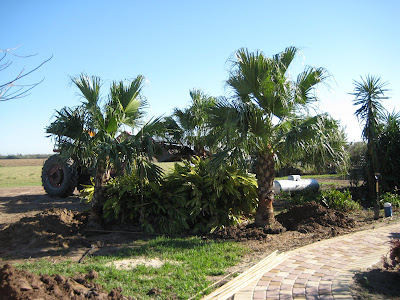 When I see Texas Huisache trees beginning to bloom, I know Spring is right around the corner. Not only is the golden pom-pom pleasing to the eye, the aroma is sweet, sweet, sweet. This small-leafed tree is a member of the mimosa family. It's considered a large shrub or medium tree but my experience leads me to give it lots of room to spread. A word of warning - this is a thorned tree and around my yard the saw bugs LOVE it - thus I feel like I am forever dragging those thorny branches to the brush pile. Huisache is very drought tolerant making it beloved addition to an arid spot in my yard.
When I see Texas Huisache trees beginning to bloom, I know Spring is right around the corner. Not only is the golden pom-pom pleasing to the eye, the aroma is sweet, sweet, sweet. This small-leafed tree is a member of the mimosa family. It's considered a large shrub or medium tree but my experience leads me to give it lots of room to spread. A word of warning - this is a thorned tree and around my yard the saw bugs LOVE it - thus I feel like I am forever dragging those thorny branches to the brush pile. Huisache is very drought tolerant making it beloved addition to an arid spot in my yard.Huisache is a Valley native. If you observe a field that has been left fallow for a few years, it seems to be one of the first trees to sprout.
It is an important nesting site for white-wing - guess there's a reason for those thorns. We almost always have a nest in one of our Huisache trees. The day I took these pictures there was a Goldenfinch (American or Lesser, who knows) flitting from blossom to blossom. We've put out two thistle feeders for them - and have not seen a single one feeding there. Guess they're well fed by nature. According to the Native Plant Project, bees are attracted to the pollen of the Huisache tree, not the nectar. I wonder if it's the same for that Goldenfinch.

















